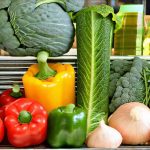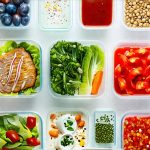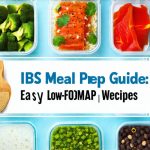The modern grocery store is a labyrinth designed to tempt us with endless choices, many of which contribute little nutritional value and often lead to unnecessary spending and food waste. Navigating this landscape can feel overwhelming, especially for those striving for a healthier lifestyle or simply looking to streamline their weekly routines. A significant part of healthy eating isn’t necessarily about restrictive diets; it’s about building sustainable habits centered around whole foods, minimizing processed ingredients, and having a well-planned grocery list that supports your needs without breaking the bank. The key is intentionality – knowing what you need before you step foot in the store, and resisting impulse purchases.
This article focuses on creating a “low-bloat” grocery list—not necessarily referring to digestive bloating (though many of these choices can support gut health), but rather one that’s lean, efficient, and filled with items that offer maximum nutritional bang for your buck. It’s about prioritizing real food over packaged convenience, reducing unnecessary ingredients, and building a foundation for consistently healthy meals. The aim is a list that minimizes decision fatigue during the week, encourages cooking at home, and supports long-term wellbeing without feeling restrictive or overly complicated. We’ll focus on versatility, allowing these essentials to be adapted into a wide range of dishes and meal plans. You can even start by looking at a grocery list tailored for specific diets.
Core Pantry Staples & Produce Powerhouses
A truly efficient grocery list begins with building a solid pantry foundation. These are the items you’ll use consistently, forming the base for countless meals. Think about items that have a long shelf life or can easily be frozen to prevent waste. This isn’t just about saving money; it’s about having reliable ingredients on hand when inspiration strikes (or when you simply don’t have time for an elaborate grocery run). Versatility is paramount here.
Consider staples like: whole grains (brown rice, quinoa, oats), legumes (lentils, chickpeas, black beans – canned or dried), healthy fats (olive oil, avocado oil, nuts and seeds), and spices/herbs. For produce, focus on items that are relatively inexpensive, versatile, and offer a good nutritional profile. Root vegetables like potatoes, sweet potatoes, carrots, and onions are excellent choices, as are hardy greens such as kale or spinach. Frozen fruits and vegetables are also incredibly valuable – often more affordable than fresh, they retain their nutrients well and eliminate the worry of spoilage. Don’t underestimate the power of apples and bananas; they’re convenient snacks that offer fiber and essential vitamins. For those with intolerances, grocery shopping can be tricky but manageable.
Beyond these basics, think about how you typically eat. Do you enjoy making soups? Stock up on vegetable broth and canned tomatoes. Do you prefer quick breakfasts? Oatmeal and yogurt are excellent choices. The goal is to personalize this core list to your preferences and eating habits. A well-stocked pantry dramatically reduces the need for last-minute grocery trips and encourages more home cooking, which is often healthier and more cost-effective than eating out or relying on processed foods. Knowing how to prep for these trips can make all the difference.
Protein Sources – Lean & Versatile Options
Protein is crucial for satiety, muscle maintenance, and overall health. However, protein sources can significantly impact both your budget and the “bloat” of your grocery list (meaning unnecessary expense). Prioritize lean proteins that are versatile enough to be used in a variety of dishes. While red meat has its place, it shouldn’t necessarily dominate every week’s shopping list.
Excellent options include: chicken breast or thighs (buy in bulk when on sale and freeze portions), fish (salmon, tuna, cod – canned is a great affordable option), eggs (a protein powerhouse with endless possibilities), tofu (versatile and plant-based), and Greek yogurt (high in protein and calcium). Consider incorporating more plant-based protein sources like lentils and beans, which are significantly cheaper than meat and offer additional fiber. Remember to look for sustainably sourced options whenever possible, both for environmental reasons and to ensure quality.
A smart strategy is to plan your meals around your protein source. For example, if you buy a whole chicken, you can roast it on Sunday, then use the leftovers for sandwiches, salads, or soups throughout the week. This minimizes waste and maximizes the value of your purchase. Don’t be afraid to experiment with different cuts of meat or plant-based alternatives – there are countless ways to incorporate protein into your diet without relying solely on expensive or processed options. If you experience sudden acid spikes, having grocery items on hand is essential.
Building a Weekly Meal Plan Around Your Essentials
The grocery list isn’t just about individual items; it’s about creating the building blocks for complete meals. This is where meal planning comes in. It doesn’t have to be elaborate – even a rough outline of what you plan to eat each night can save time, money, and stress. Start by listing out 3-5 main dishes you enjoy making (or want to try) that utilize the core pantry staples and protein sources we’ve discussed.
- Choose one or two nights for “flex meals” – these are nights where you can use up leftovers, eat a simple meal like eggs and toast, or even go out if desired.
- Consider batch cooking. Preparing larger quantities of food on the weekend (like roasted vegetables or cooked grains) saves time during the week.
- Write down all the ingredients needed for these meals, then cross-reference them with what you already have in your pantry. This is how you create a targeted grocery list that avoids unnecessary purchases.
The key here is to be realistic. Don’t plan overly ambitious meals if you know you won’t have time to cook them. Start small and gradually build up your meal planning skills. Remember, the goal isn’t perfection; it’s simply having a plan that makes healthy eating more manageable. Consider how to plan for gut health when building this plan.
Minimizing Food Waste – Smart Storage & Usage
Food waste is a significant problem, both for our wallets and the environment. A low-bloat grocery list should actively address this issue by focusing on items you’ll actually use and employing smart storage techniques. Proper food storage extends the shelf life of your ingredients and prevents spoilage. Invest in airtight containers, utilize freezer space effectively (labeling dates is crucial!), and learn how to properly store different types of produce.
Here are a few practical tips:
– Store herbs like parsley or cilantro in a glass of water in the refrigerator.
– Wrap leafy greens in paper towels before storing them in a plastic bag.
– Freeze leftover cooked grains or vegetables for future use.
– Don’t be afraid to repurpose leftovers – roasted chicken can become chicken salad, and leftover vegetables can be added to soups or stir-fries.
Furthermore, plan your grocery shopping around what you already have. Before creating your list, take inventory of your pantry and refrigerator. This prevents you from buying duplicates and encourages you to use up items that are nearing their expiration dates. Embracing “ugly produce” (slightly imperfect fruits and vegetables) is another way to reduce waste and save money – often these items are discarded by grocery stores simply because they don’t meet aesthetic standards.
Adapting the List To Your Dietary Needs & Preferences
The low-bloat grocery list we’ve outlined is a starting point, not a rigid set of rules. It’s essential to adapt it to your specific dietary needs and preferences. If you follow a vegetarian or vegan diet, adjust the protein sources accordingly, focusing on plant-based options like tofu, tempeh, lentils, and beans. If you have allergies or intolerances, carefully check ingredient labels and avoid any triggering foods.
Consider your lifestyle as well. Do you have limited time for cooking? Prioritize quick and easy meals that require minimal preparation. Do you enjoy baking? Add ingredients like flour, sugar, and vanilla extract to your list. The goal is to create a grocery list that supports your individual health goals and makes healthy eating enjoyable, not restrictive. Don’t be afraid to experiment with different foods and recipes until you find what works best for you. A sustainable approach to healthy eating is one that fits seamlessly into your life, rather than requiring constant effort or deprivation. You can even create a GERD-friendly list if needed.


















